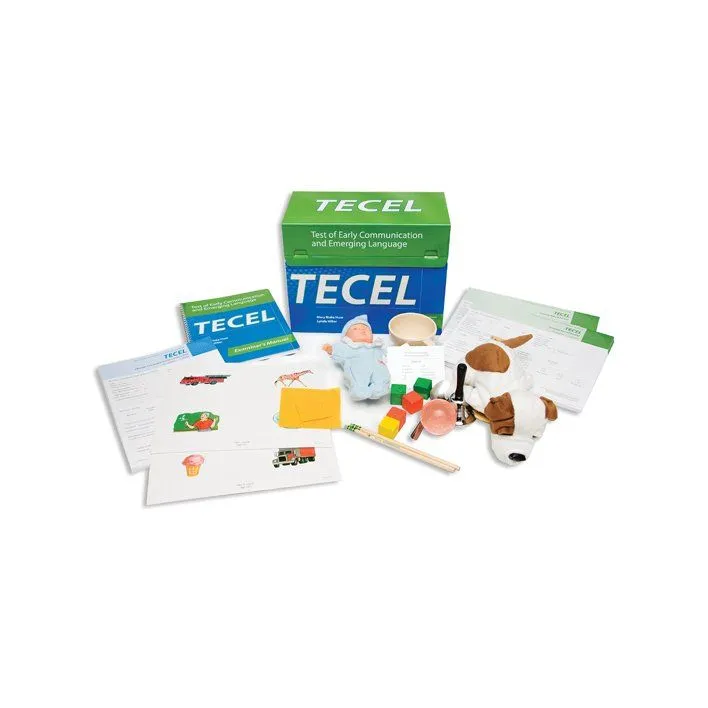(TECEL) Test of Early Communication and Emerging Language
(TECEL) Test of Early Communication and Emerging Language
From $46.00
To $560.00
In stock
Sign In to download sample materials.
Don't have an account? Register Here.
About This Product

BY MARY BLAKE HUER AND LYNDA MILLER
A revision of the highly regarded Nonspeech Test for Receptive/Expressive Language, the TECEL assesses early communication and emerging language in infants and toddlers up to 24 months of age. It can also be used with older children who have moderate to severe language delays.
Child Observation and Parent Interview
To administer the TECEL, the examiner interacts with the child and observes his or her behavior (response to sounds, attention to pictures, and use of words or symbols to refer to objects). Toys, small household objects, and a set of full-color Picture Plates—all included in the Kit—are used to engage the child and elicit specific behaviors. The examiner also interviews the parent or caregiver, asking detailed questions about the child’s communication and language skills. Instructions in the Manual and on the Record Booklet guide the examiner through both the observation and the interview.
Norm-Referenced Scores and a Handy Intervention Planner
Each item on the test is color-coded to indicate whether it measures receptive or expressive language skills. A score of 1 is given for each correct response, a score of 0 for each incorrect response. Item points are totaled to arrive at a raw score, which is then converted to three normative scores: percentile rank, age equivalent, and a standard index score. The child’s performance is also described as falling into one of seven categories, ranging from “Very Poor” to “Very Superior.”
When testing is complete, the examiner can refer to the Informal Assessment and Intervention Plan (included in the Kit) for additional interpretive information. This convenient booklet guides users in making placement and treatment recommendations.
A Clear Picture of Strengths and Weaknesses
In the hands of speech-language pathologists, early childhood specialists, diagnosticians, psychologists, and related professionals, the TECEL can be used to:
- Assess communication and language strengths and weaknesses
- Design intervention plans
- Predict future language development
The test can be administered to both verbal and nonverbal children, including those who communicate by means other than speech.






